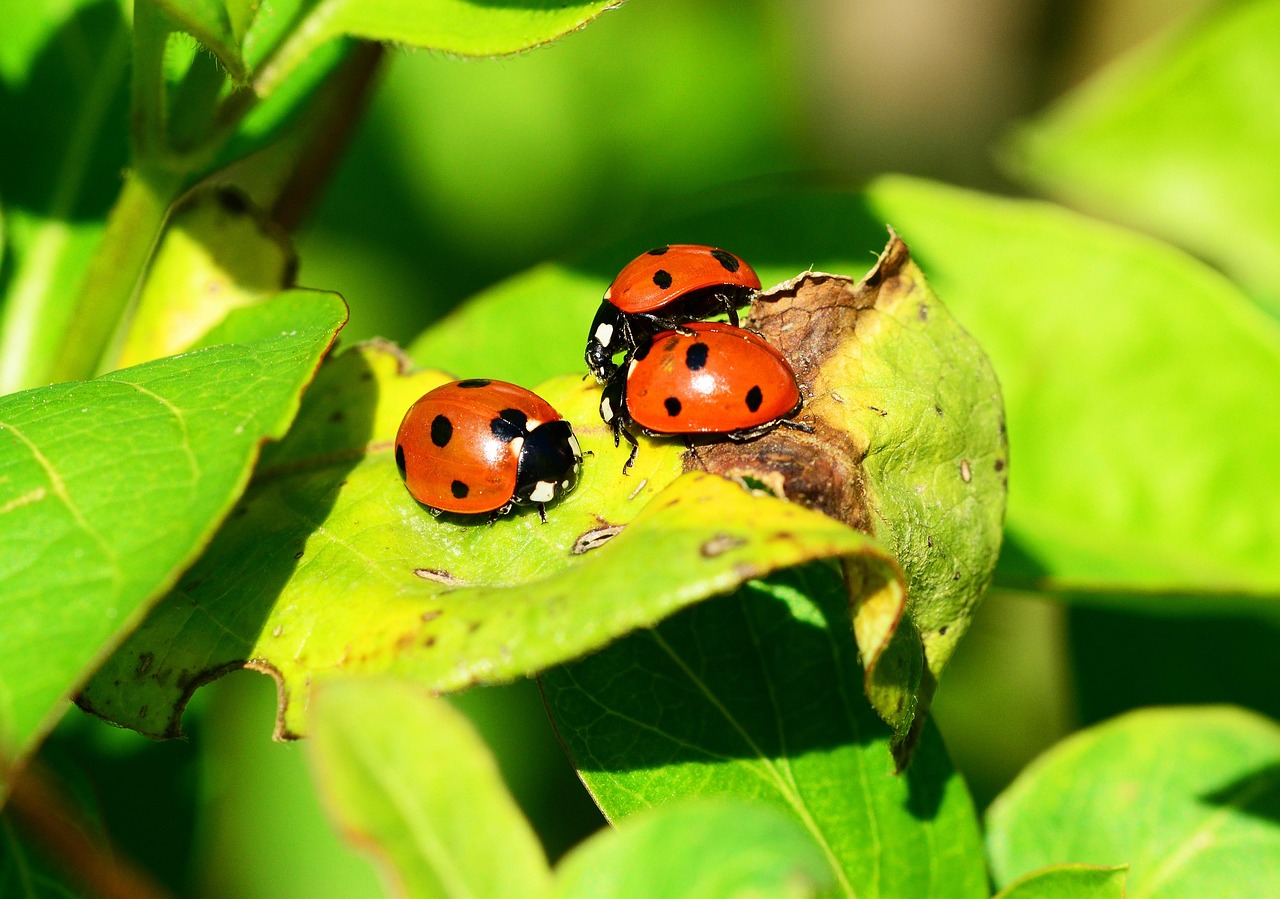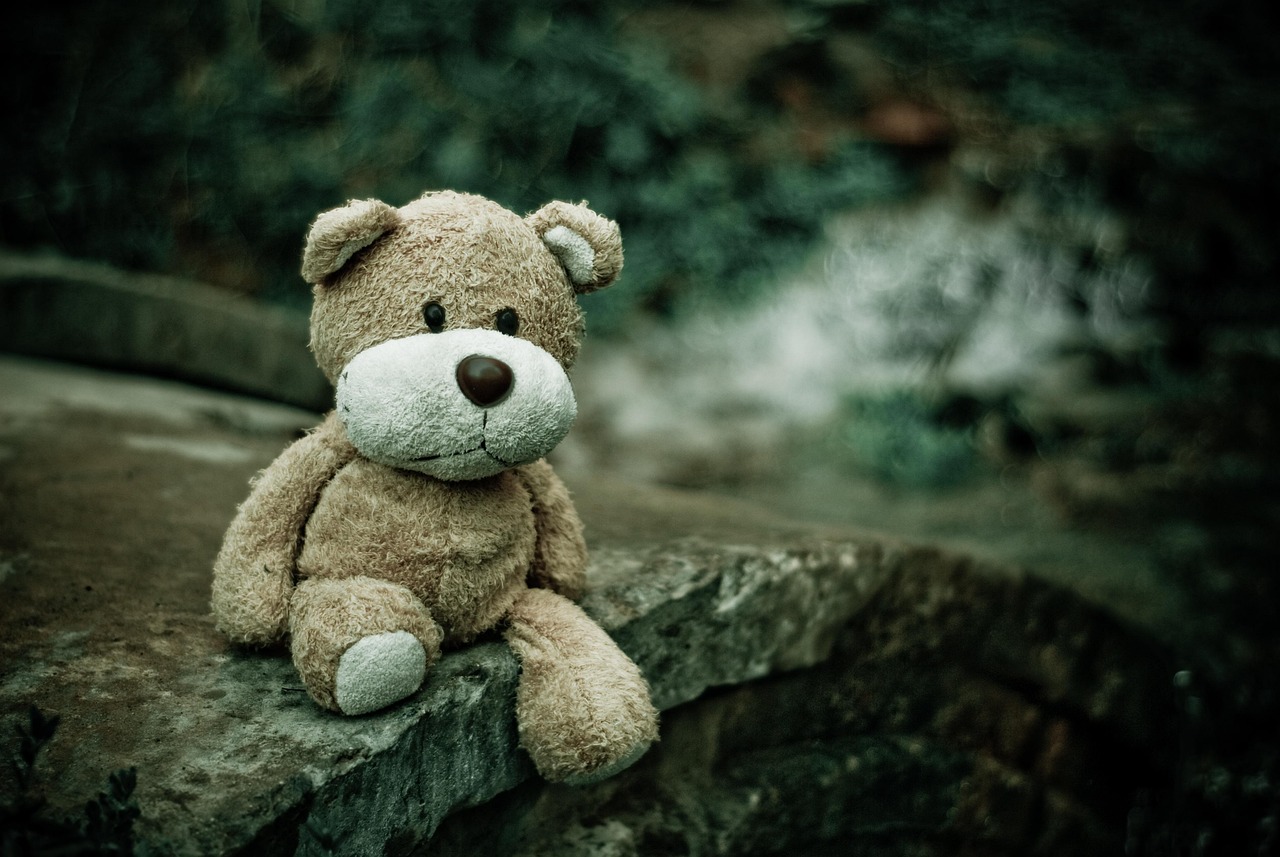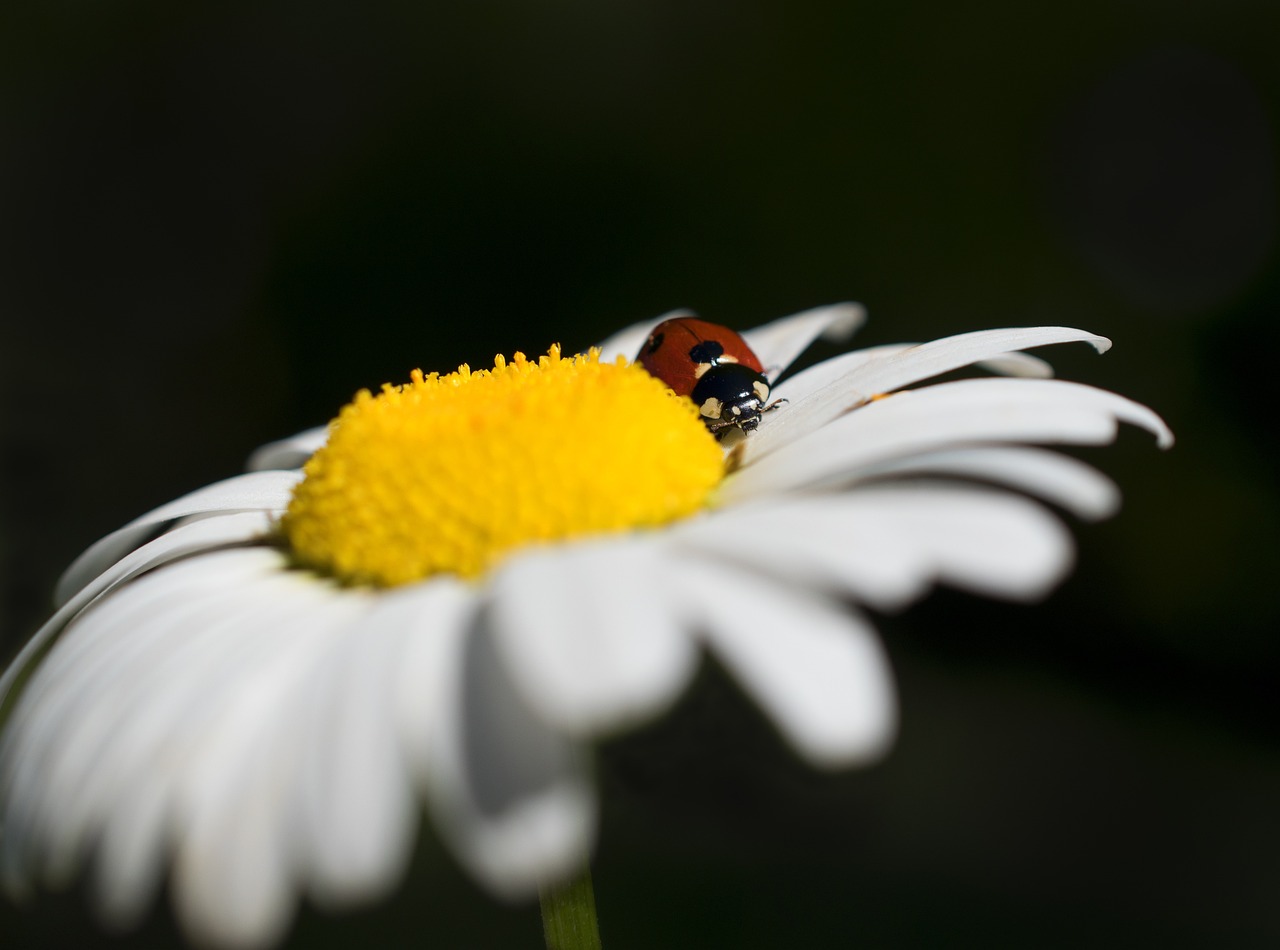The Lost Ladybugs Project aims to investigate the causes behind the decline of ladybug populations across North America. By engaging citizen scientists, the project collects data on ladybug sightings and helps raise awareness about the importance of these beneficial insects in ecosystems.
Understanding Ladybug Decline

Ladybugs, often recognized for their vibrant colors and distinctive spots, play a vital role in agricultural ecosystems. These small beetles are known for their appetite for aphids and other pests, making them natural pest controllers. However, in recent years, many species of ladybugs have experienced significant population declines. This worrying trend has sparked interest among scientists and conservationists alike.
The Lost Ladybugs Project was initiated to address this pressing issue. It encourages individuals, schools, and communities to observe and report ladybug sightings. By gathering data from citizen scientists, the project aims to map the distribution of various ladybug species and identify potential threats to their survival.
The decline of ladybug populations can be attributed to multiple factors. These include habitat loss, pesticide use, climate change, and competition from non-native species. Understanding these threats is crucial for developing effective conservation strategies.
In addition to their ecological roles, ladybugs also hold cultural significance. Many people associate them with good luck and prosperity. This cultural connection adds an extra layer of motivation for conservation efforts, as communities rally to protect these beloved insects.
| Threats to Ladybug Populations | Description |
|---|---|
| Habitat Loss | Urbanization and agricultural expansion reduce natural habitats. |
| Pesticide Use | Chemical pesticides kill beneficial insects including ladybugs. |
| Climate Change | Changing temperatures and weather patterns affect food sources. |
| Competition from Non-native Species | Invasive ladybug species can outcompete native populations. |
The project not only focuses on data collection but also emphasizes education and outreach. Workshops and community events aim to teach people about the importance of ladybugs and how they can contribute to their conservation. Engaging the public fosters a sense of stewardship over local ecosystems.
Moreover, the Lost Ladybugs Project collaborates with researchers and institutions to analyze the collected data. This collaboration enhances understanding of ladybug biology and ecology, contributing to broader conservation efforts. Insights gained from this research may lead to targeted actions that can help reverse the decline of ladybug populations.
The project’s efforts extend beyond mere data collection. It aims to inspire a new generation of entomologists and conservationists by providing hands-on experiences in science and ecology. By involving young people in fieldwork, the project cultivates interest in biodiversity and conservation.
As awareness spreads about ladybug declines, more individuals are becoming involved in tracking these insects. The collective efforts of citizens and scientists are crucial for the future of ladybugs and the ecosystems they support. Through continued engagement and education, there is hope for reversing the trends threatening these important creatures.
The Role of Citizen Science in the Lost Ladybugs Project
Citizen science plays a pivotal role in the Lost Ladybugs Project. By involving the public in scientific research, the project harnesses the collective power of individuals to gather valuable data. This approach not only aids research but also fosters a deeper connection between people and their environment.
Participants are encouraged to observe ladybug populations in their local areas. They record sightings and share important information about the species they encounter. This data collection is essential for tracking population trends and identifying changes in distribution. The contributions from citizen scientists provide a wealth of information that would be difficult to obtain through traditional research methods alone.
How to Participate
Getting involved in the Lost Ladybugs Project is simple and rewarding. Anyone can become a citizen scientist by following these steps:
- Register: Sign up on the Lost Ladybugs Project website to become a member.
- Learn: Familiarize yourself with different ladybug species. Educational resources are provided to help with identification.
- Observe: Spend time in gardens, parks, or natural areas looking for ladybugs.
- Record: Use the online platform or mobile app to document your sightings, noting details such as location and species.
- Share: Participate in community events and share your findings with others to raise awareness.
This process not only contributes to scientific knowledge but also allows individuals to engage actively with nature. Participants often report feeling a sense of achievement and excitement when they discover different ladybug species.
The Importance of Ladybugs in Ecosystems
Ladybugs are more than just charming insects; they play crucial roles in maintaining healthy ecosystems. Their presence can indicate the overall health of an environment. Understanding these roles highlights the importance of protecting ladybug populations.
Some key benefits of ladybugs include:
- Pest Control: Ladybugs are voracious predators of aphids and other harmful pests, reducing the need for chemical pesticides.
- Biodiversity Indicators: The presence of various ladybug species can signal healthy plant and insect diversity in an ecosystem.
- Pollination Assistance: While not primary pollinators, ladybugs contribute to the pollination process by moving between plants.
The decline of ladybug populations can therefore have cascading effects on agricultural systems and natural habitats. As these beneficial insects disappear, farmers may face increased pest pressures, leading to higher pesticide use and potential harm to surrounding wildlife.
Current Research on Ladybug Decline
Researchers continue to investigate the underlying causes of ladybug population declines. Recent studies focus on several areas:
- Genetic Diversity: Research is examining how genetic variation affects resilience to environmental changes and diseases.
- Habitat Restoration: Studies explore methods for restoring habitats that support ladybug populations, enhancing their chances for survival.
- Impact of Climate Change: Researchers analyze how shifting climate patterns influence ladybug behavior, reproduction, and distribution.
This ongoing research is essential for developing strategies to mitigate threats to ladybugs and restore their populations. By understanding how various factors interact, scientists can propose targeted conservation actions tailored to specific regions or species.
Community Engagement and Education
The Lost Ladybugs Project emphasizes community engagement as a crucial element of its mission. Through workshops, school programs, and outreach events, the project educates people about the ecological importance of ladybugs and how they can help in their conservation efforts.
Educational initiatives aim to foster a sense of responsibility and stewardship among participants. Hands-on activities, such as habitat restoration projects or guided nature walks, allow individuals to experience firsthand the impact of their actions on local ecosystems. Engaging communities in this way not only promotes conservation but also builds a network of informed advocates for biodiversity.

By cultivating interest in entomology and ecology, the Lost Ladybugs Project inspires future generations to take an active role in preserving our planet’s rich natural heritage.
The Science Behind Ladybug Identification
Identifying different species of ladybugs is a key component of the Lost Ladybugs Project. Accurate identification helps researchers track population changes and assess the health of ecosystems. With over 450 species of ladybugs in North America, understanding their characteristics is essential for both citizen scientists and researchers.
Ladybugs exhibit a variety of colors, patterns, and sizes. Some common features used for identification include:
- Color: Ladybugs can be red, orange, yellow, or even black.
- Spots: The number and arrangement of spots can help distinguish species.
- Body Shape: Different species have unique body shapes that can aid in identification.
To assist citizen scientists, the Lost Ladybugs Project provides resources such as identification guides and online databases. These materials help individuals learn how to identify ladybug species accurately and contribute valuable data to the project.
Field Guides and Resources
Several resources are available for those interested in identifying ladybugs. These include:
- Field Guides: Printed guides featuring illustrations and descriptions of various species.
- Mobile Apps: Applications that allow users to upload photos and receive instant feedback on their findings.
- Online Databases: Websites where users can compare their observations with existing records.
By utilizing these resources, citizen scientists can enhance their skills in species identification, leading to more accurate data collection. This not only contributes to the goals of the Lost Ladybugs Project but also enriches participants’ understanding of biodiversity.
The Impact of Climate Change on Ladybug Populations

Climate change poses significant challenges for many species, including ladybugs. Rising temperatures and shifting weather patterns can disrupt their habitat and food supply, leading to population declines. Understanding these impacts is crucial for developing effective conservation strategies.
Some specific ways climate change affects ladybug populations include:
- Altered Habitats: Changes in temperature and precipitation patterns can make certain habitats unsuitable for ladybugs.
- Food Availability: A decline in aphid populations due to climate changes can directly impact ladybug survival.
- Migratory Patterns: Some species may struggle to migrate effectively in response to changing climates, affecting their breeding success.
Research into these impacts is ongoing, with scientists studying how different ladybug species respond to climate stressors. This knowledge is vital for predicting potential future declines and implementing timely conservation measures.
Adaptive Strategies for Ladybugs
As climate challenges grow, some ladybug species may develop adaptive strategies that enhance their survival. These adaptations could include:
- Behavioral Changes: Altering feeding habits or nesting preferences to cope with new environmental conditions.
- Physiological Adaptations: Developing resistance to temperature fluctuations or changing reproductive cycles to align with food availability.
Studying these adaptations can provide insights into which species are more resilient to climate change. Identifying these resilient species is important for focusing conservation efforts where they are most needed.
The Role of Habitat Conservation
Habitat conservation is integral to protecting ladybug populations. As urbanization and agricultural expansion continue to threaten natural spaces, conserving existing habitats becomes increasingly important. Efforts to restore and create suitable environments can significantly benefit ladybug populations.
Key strategies for habitat conservation include:
- Restoration Projects: Initiatives aimed at rehabilitating degraded habitats to support diverse plant and insect life.
- Creating Pollinator Gardens: Establishing gardens with native plants can provide crucial food sources for ladybugs and other beneficial insects.
- Reducing Pesticide Use: Advocating for integrated pest management practices that minimize chemical use in agriculture.
By implementing these strategies, communities can enhance local ecosystems, providing safe havens for ladybugs and other wildlife. Engaging local groups in habitat conservation efforts also fosters a sense of ownership and stewardship over natural resources.
The integration of these conservation strategies with citizen involvement creates a comprehensive approach to addressing ladybug decline, ensuring that both research and community action work hand in hand towards a healthier ecosystem.
Future Directions for the Lost Ladybugs Project

As the Lost Ladybugs Project continues to evolve, several future directions aim to enhance its impact on ladybug conservation and broaden public engagement. These initiatives will build upon current efforts and seek to address emerging challenges.
One promising area of focus is the expansion of educational programs. By developing more comprehensive curricula for schools, the project can reach younger audiences and instill a sense of environmental responsibility early on. Workshops that include hands-on activities, such as ladybug tracking and habitat creation, can inspire students to become lifelong advocates for biodiversity.
Another important direction is the integration of technology in data collection and analysis. The use of mobile applications that allow users to upload sightings in real time can streamline data gathering. This technology can also facilitate better communication between scientists and citizen scientists, fostering a collaborative research environment.
Furthermore, partnerships with agricultural organizations can promote sustainable practices that benefit both farmers and ladybug populations. By demonstrating the economic advantages of natural pest control through ladybugs, farmers may be more likely to adopt practices that protect these beneficial insects.
Challenges Ahead
Despite the positive trends, several challenges remain in the effort to conserve ladybug populations. Climate change continues to pose unpredictable threats, making it difficult for scientists to develop long-term strategies. Additionally, habitat destruction from urban development and intensive agricultural practices remains a pressing concern.
Moreover, the introduction of non-native ladybug species can complicate conservation efforts. These invasive species often outcompete native populations for resources, exacerbating existing declines. Ongoing research is necessary to monitor these dynamics and understand their implications for local ecosystems.
Addressing these challenges requires a multi-faceted approach that combines research, education, and community action. Continued support for the Lost Ladybugs Project and similar initiatives is vital for creating a sustainable future for ladybugs and the ecosystems they inhabit.
Final Thoughts
The Lost Ladybugs Project represents a significant step toward understanding and mitigating the decline of ladybug populations across North America. Through citizen science, community engagement, and targeted research, the project offers a model for conservation efforts that can be replicated in other areas of biodiversity preservation.
Ladybugs are more than just charming insects; they are vital components of healthy ecosystems. Their decline signals broader environmental issues that require immediate attention. By raising awareness and promoting active participation in conservation efforts, individuals can make a tangible difference in protecting these essential creatures.
In conclusion, the collective efforts of scientists, citizen scientists, and engaged communities are crucial for reversing the trends threatening ladybug populations. As more people become aware of their ecological significance, there is hope for a resurgence of these beloved insects. Through continued collaboration and commitment to conservation, we can ensure that ladybugs will thrive in our gardens, fields, and natural landscapes for generations to come.
